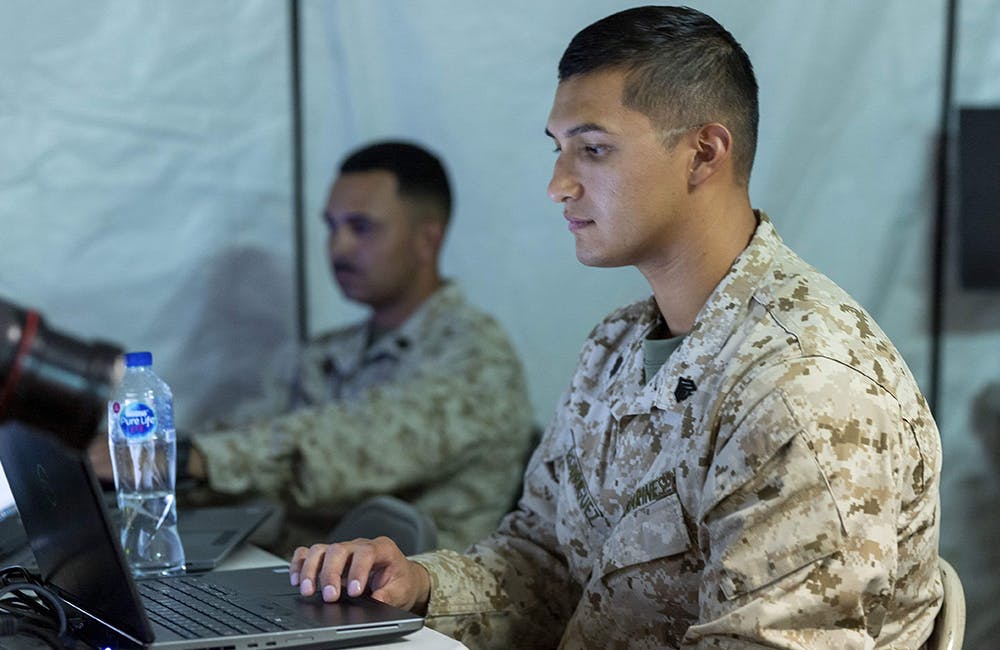COVID-19 Has Encouraged Procurement and Contracting Reform
Smaller firms found plus sides of the remote environments in the competitive contracting space.

The demands of responding to COVID-19 has encouraged reforms in federal procurement. This has been especially pronounced in the government’s expansion of remote network access to accommodate a dispersed workforce.
Speaking at the 2021 AFCEA Health IT Acquisition & Public Health forum, representatives from across the federal government outlined how their agencies have helped streamline the acquisitions process and opened the competitive space to smaller and mid-sized firms in order to facilitate IT development.
“Suddenly there was a need for new hardware, software and network access security, so we advised our Small Business Administration, Department of Veteran Affairs and Social Security Administration on their procurement strategies,” said Roya Konzman, acting division director for solutions development at General Services Administration’s Federal Acquisition Service (FAS). “GSA empowered its contracting officers to expand its rated orders authority. These orders are issued in accordance to the defense priorities and allocation system, and rated orders applied to IT capabilities included teleworking and health care solutions such as VPN accounts, virtual desktop infrastructure solutions, laptops and mobile devices, and also covered personal protective equipment, such as medical products hand sanitizers and disposable gloves.”
As a result, federal agencies like VA were able to meet the sudden demand for both medical equipment and secure remote access for a newly dispersed workforce.
“The rated order authority is used during a national emergency. It prioritizes solicitation that GSA places on behalf of an agency to buy goods and services. So when a contractor receives the rated order, they must prioritize that order ahead of other orders,” Konzman explained.
However, the sheer quantity of rated orders issued to larger contractors meant that individual suppliers often struggled to meet these demands within the given timeframe, resulting in federal agencies looking to potentially expand their contracting base to more specialized smaller and mid-sized firms.
“We are being told by industry that everybody has given us rated orders, so how do we prioritize those?” said Chuck Ross, procurement director at VA’s Technology Acquisition Center. “There’s a trade off there to having multiple suppliers. That might be something that we’re really looking at instead of putting all your eggs in one basket and using one vendor all the time like during times of COVID and when other emergencies might emerge.”
Federal contracting managers have found value of partnering with smaller and mid-sized firms due to their particular specialization and responsiveness.
“One of the things that small businesses can do is they’re very agile, very nimble and can switch directions very quickly, as opposed to going up through the bureaucracy you often find in larger businesses,” said Anita Allen, small business specialist at the Department of Health and Human Services’ Office of Small and Disadvantaged Businesses Utilization (OSDBU).
Another positive side effect of the government’s recent investment in video conferencing software and remote connectivity has been the ability of vendors to demonstrate their products to federal procurement offices. This has allowed agencies to more rapidly and smoothly evaluate a large range of potential contractors, including entrants who might otherwise have been dwarfed by larger businesses with preexisting relationships.
“We’ve utilized product demos virtually,” Ross said. “We’ve actually had vendors that traditionally had to come into the office or provide in-person demonstrations of their technologies just doing that remotely. It’s worked out great, and as a result we’ve utilized that more in our evaluation procedures.”
This is a carousel with manually rotating slides. Use Next and Previous buttons to navigate or jump to a slide with the slide dots
-

Navy Expands Black Pearl Capabilities to Drive Operational Resilience
The Department of the Navy's Black Pearl software factory and Innovation Adoption Kit boost software development and operational resilience.
5m read -

How NASA’s AI Plan Boosts Government Efficiency
NASA Chief Data and AI Officer David Salvagnini shares how the agency is integrating AI with data to drive innovation and efficiency across government.
9m watch -

Modernizing IT Systems for AI Adoption
USPS, NIH and Lumen discuss how modernization, data strategies and security are shaping AI’s future role in government.
20m watch -

NSF Wants Industry Driving Quantum Innovation
The agency is pushing for partnerships to enhance the research community as Congress weighs additional legislation.
3m read








